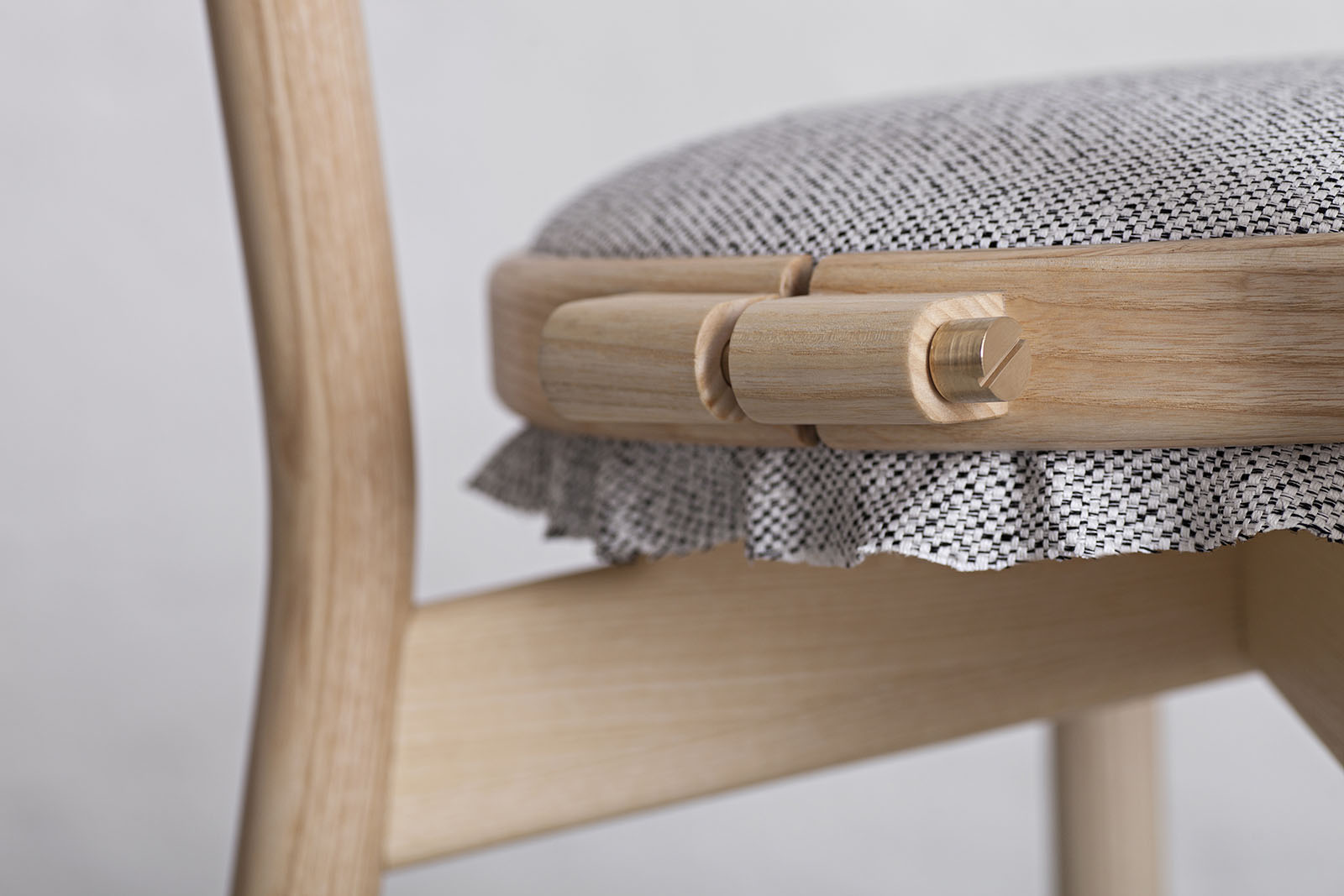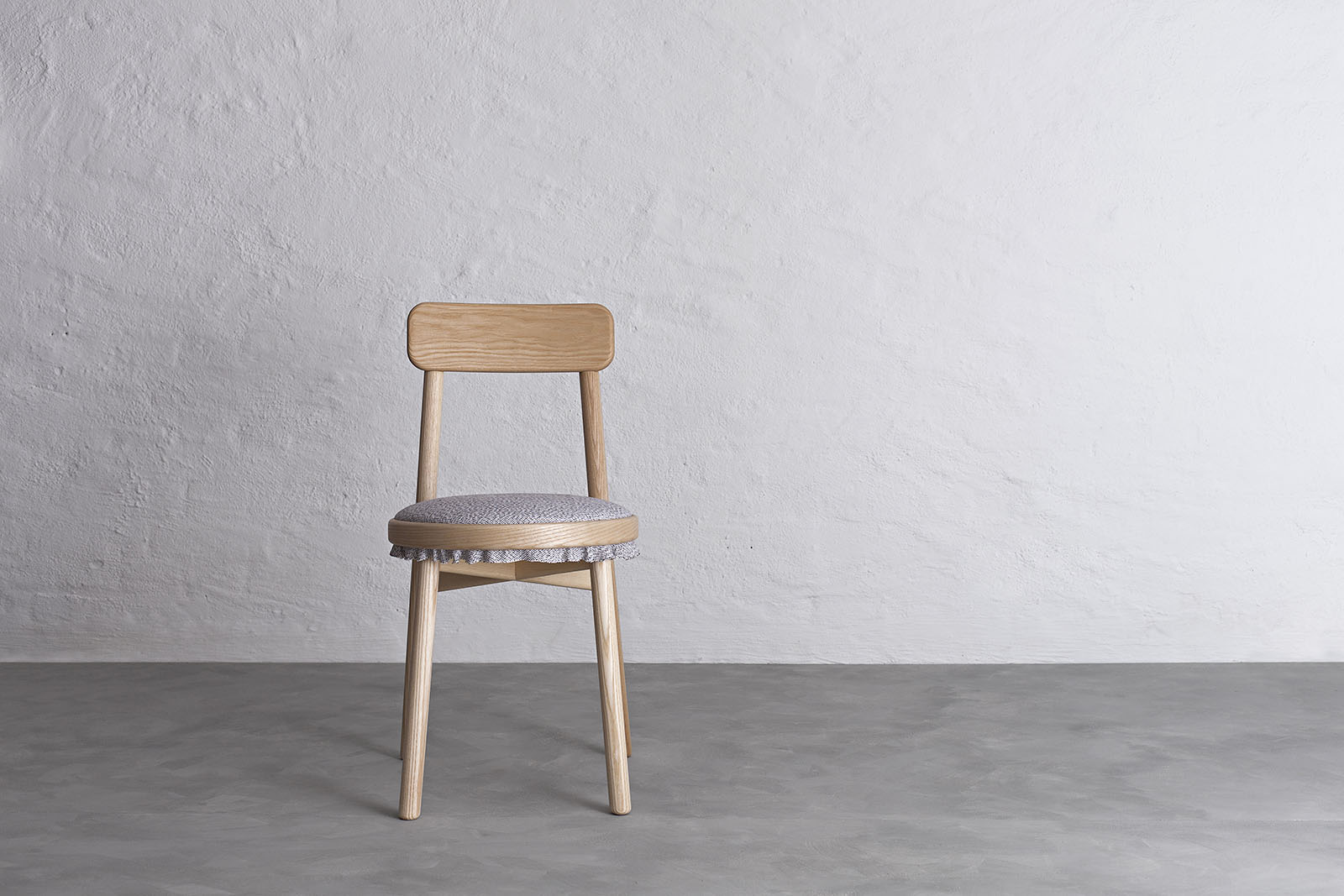












Canvas
Year / 2017
Collection / Canvas
Materials / Ash wood. Brass Details. Textile from Butler/Lindgård, Tärnsjö Leather Tannery, Klässbols
Dimensions / [h-w-d] 79 x 40 x 50 cm, Seat height 46 cm
Concept / Canvas is a chair designed to highlight the upholstery on the seat, which works like an embroidery frame to showcase varied materials like pieces of art.
Canvas is made of bent Ash wood with unique textile interpretations on the chair seat. The raw edges and visible inside of the upholstery highlights all the beautiful and natural characteristics and craft that traditionally has had a low status and been down-prioritized.
A few decades ago textile craft was the woman’s area of expertise and a lot of effort was being put into making durable products for the family. Focus lied in making textiles that would last through time, but they were often also very beautifully decorated. Today a lot of knowledge of different craft techniques has been forgotten and most people don’t know how to value the time-consuming art of making a textile weave or a natural tanned leather hide.
Canvas is a tribute to the slow and to the handmade. By using the upholstery in a respectful yet playful way we want to show the authenticity of the material and the craft that lies behind.
The textile design duo Butler/Lindgård created the artistic weave “Goosebumps” for one of the Canvas chairs that is shown at London Design Fair 2017. Goosebumps is inspired by the tactile differences of human skin, aiming for society to embrace all kinds of bodies – even those that carries signs of aging.
Together with Tärnsjö leather tannery in Sweden we used a beautiful leather hide with bite marks, scars and natural variations in form and size for our Canvas chairs. The chair allows the leather to have an irregular shape that uses the most out of the natural shaped hide.
Together with Klässbols Linen Weaving Mill in Sweden we made a version of the chair with their “Norrland” Linen upholstery. The high-quality Linen creates a durable and classic look that allows the user to also experience the backside of the weave – as beautiful as the front but usually never seen.
Photo / Ulrika Kestere
